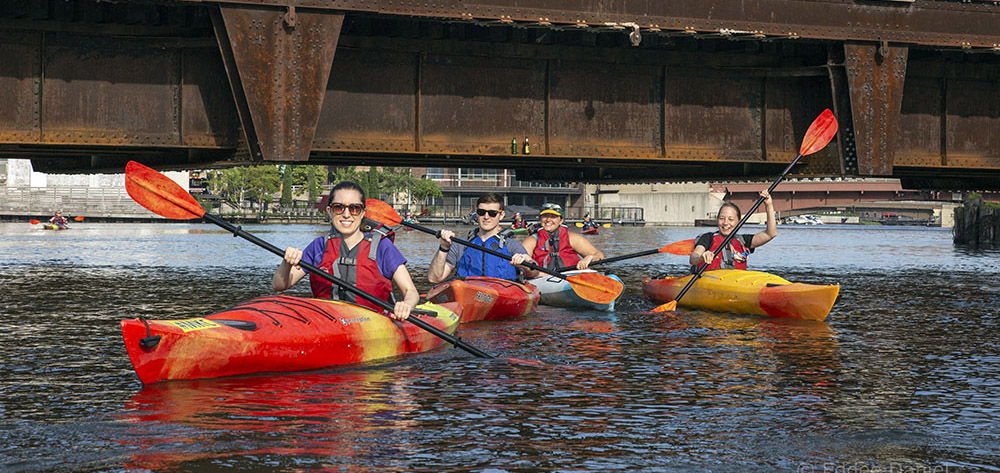
Menomonee River Valley Kayak Tour 2020
July 5, 2020 | Topics: Places
By Ben Hoekstra
Photographs by Eddee Daniel
The Menomonee Valley, before it was anything else, was an enormous wild rice marsh. Native American Villages settled along the bluffs that originally surrounded the valley, taking advantage of the abundant resources there. The Valley was everything to the Native Americans: their Home Depot for building supplies, pharmacy for medicine, and grocery store for food. The name “Menomonee” translates to “wild rice.”
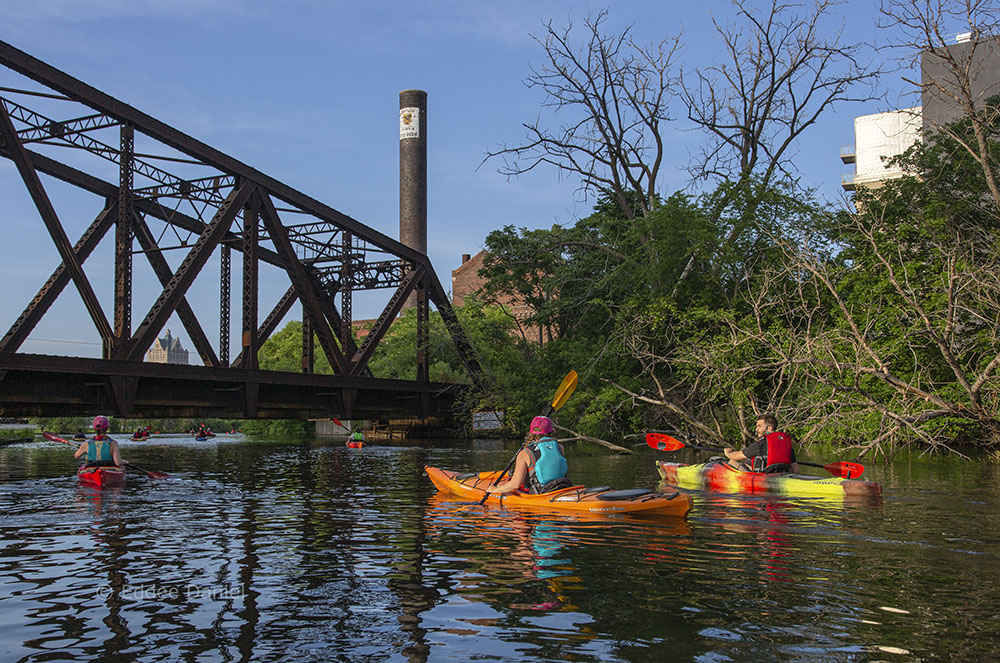
By the 1700s, the Potawatomi were the primary residents of the region, but many tribes lived here peacefully together. Unfortunately, the tribes were forced out of their land as European settlement moved in. Milwaukeeans filled the marsh with soil, gravel, and waste to create dry land for development. They straightened the Menomonee River and cut canals to provide shipping routes. As we paddle we see some 90° turns which definitely are not natural.
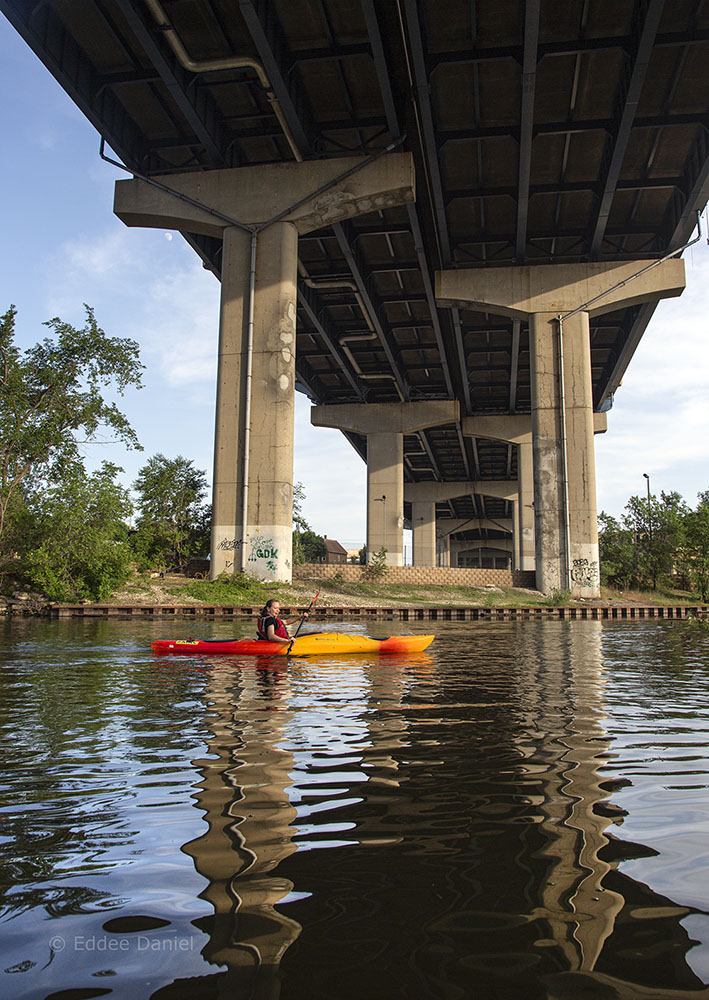
By the early 1900s, Milwaukee was known as the “Machine Shop of the World” and the Menomonee River Valley was its engine. Farm machinery, rail cars, electric motors, and cranes were made in the Valley. Clay became cream city bricks. Wheat was turned into flour, hogs became ham and barley became beer. These changes provided jobs for thousands of people, but damaged the Valley’s natural resources.
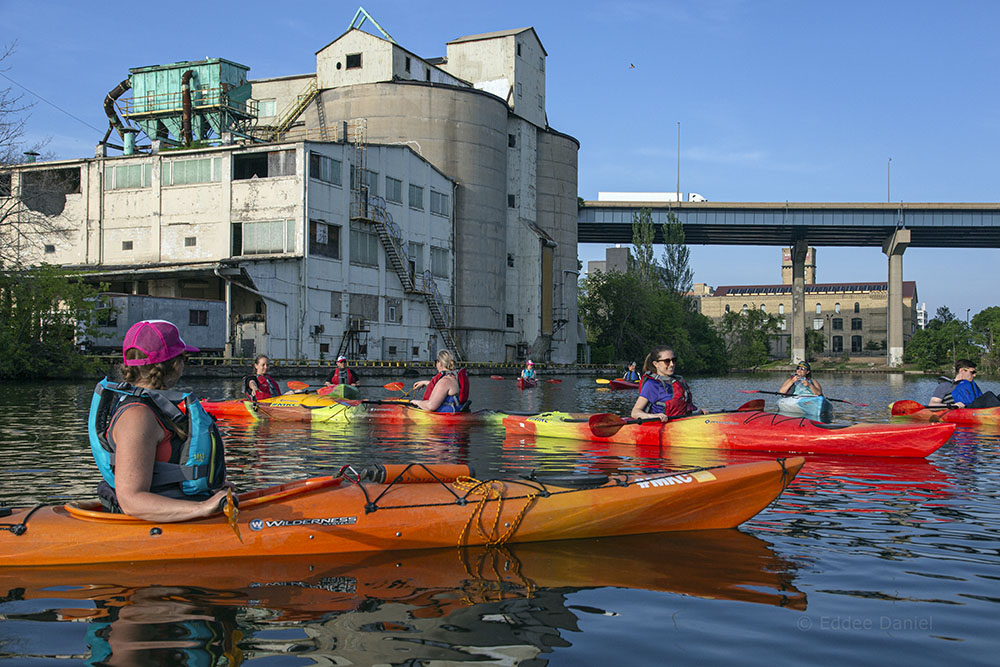
By the late 1900s, as manufacturing practices changed, the Valley was left a blighted area with abandoned, contaminated land and vacant industrial buildings. Bridges into the Valley were demolished as businesses left and the Valley was isolated from the surrounding city, a place to pass over, but not a place to go. Then, in the 1990s, Menomonee Valley Partners was formed as a nonprofit organization, a public-private partnership to facilitate business, neighborhood, and public partners in efforts to revitalize the Valley. Today, the Valley is a national model of economic and environmental sustainability. On our tour, we see many of the sites that have been transformed over the last twenty years.

The Harley Davidson Museum opened to the public in 2008, on 20 acres that used to be the site of Morton Salt, filled with piles of salt that could reach 30-40 feet tall. A 4-foot layer of imported soil was added to combat the contaminated soil. New vegetation was planted to restore the landscape. The site is now one of the top tourist destinations in the region!
Sixth Street used to cross the Valley on a viaduct. That was demolished in 2002, replaced with the twin bridges we see today, which lead down into the Valley. Before the Sixth Street Bridges, there was no easy way to get into the Valley. This area was isolated from the rest of the City.
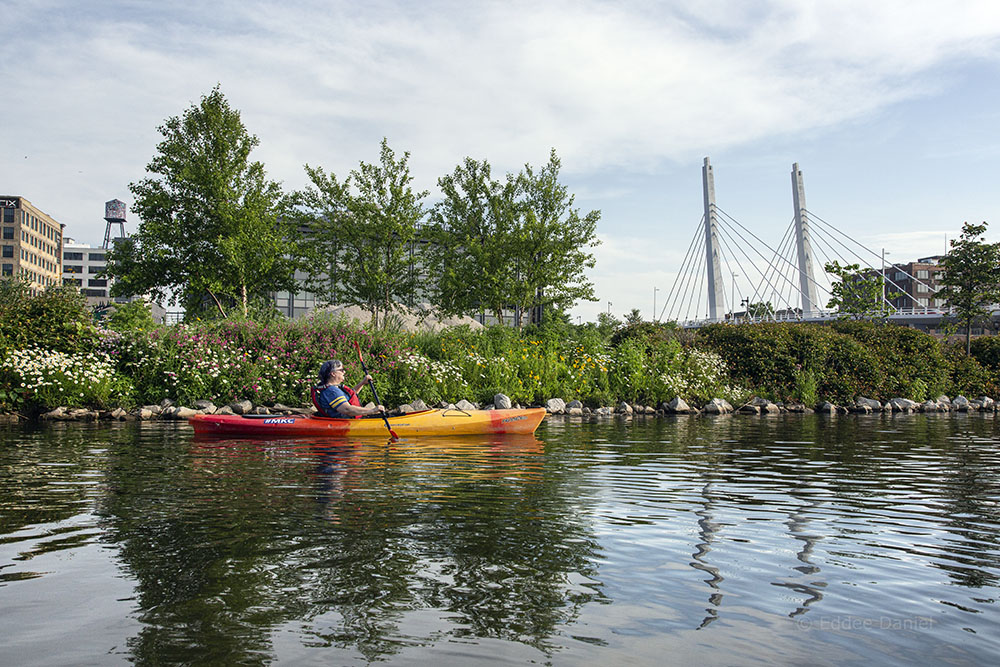
Reed Street Yards, located adjacent to the Global Water Center on the south side of the Menomonee Canal, was redeveloped to house water technology companies. There are many water features on the site. One right on the water features a storage tank and stream back to the river. Canal water is pumped through a filtration unit, aerates it through a series of cascading streams, then delivers clean water back into the Menomonee Canal. The system cleans 15,000 gallons of canal water each day.
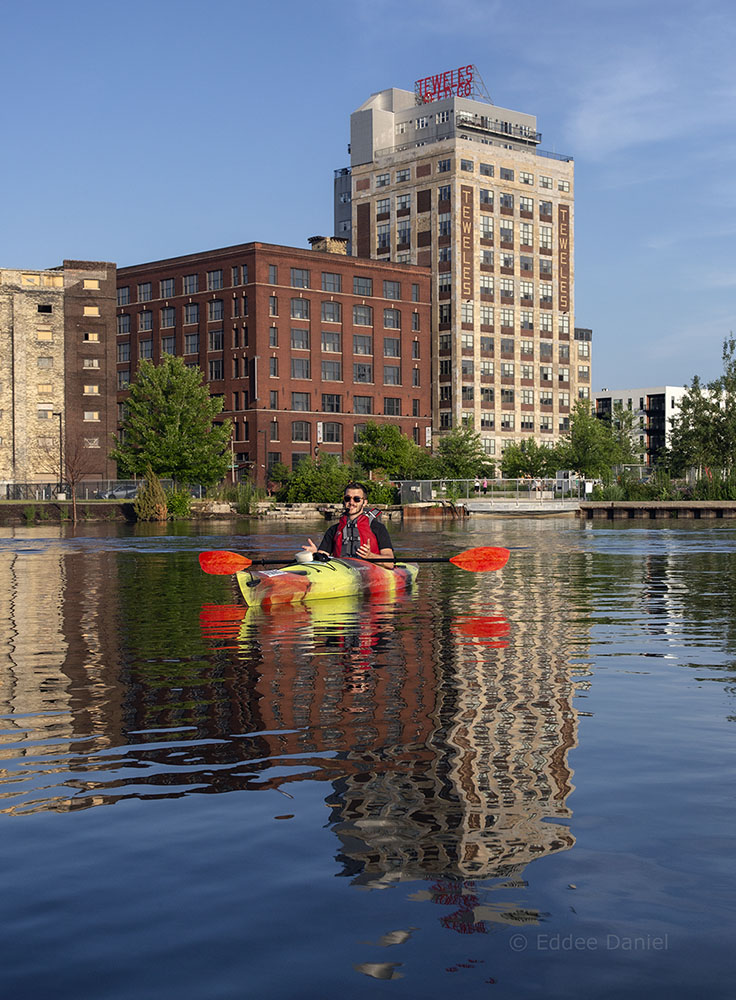
Farther down the Menomonee River, Three Bridges Park opened in 2013 on the site of a former railyard between 27th and 37th streets. The 24-acre park was landscaped with manufactured kames and drumlins that mimic the rolling hills created by melting glaciers.
Field and Stream listed the Menomonee River as one of the top 10 urban fisheries in the nation. In order to help restore fish habitats in the river, hundreds of volunteers planted trees, placed boulders for breeding, and more. Now the river experiences significant runs of steelhead and salmon each year.

Potawatomi Hotel & Casino is visible from the river. The Potawatomi first regained land in the Menomonee River Valley with the opening of a Bingo Hall in 1991. Many people are surprised when they see the casino’s presence in this prime location, but when they first moved in the Valley suffered from vacant buildings, a dilapidated road, and a negative perception. They worked diligently to turn it around and have been long-time partners for the revitalization of the Valley.
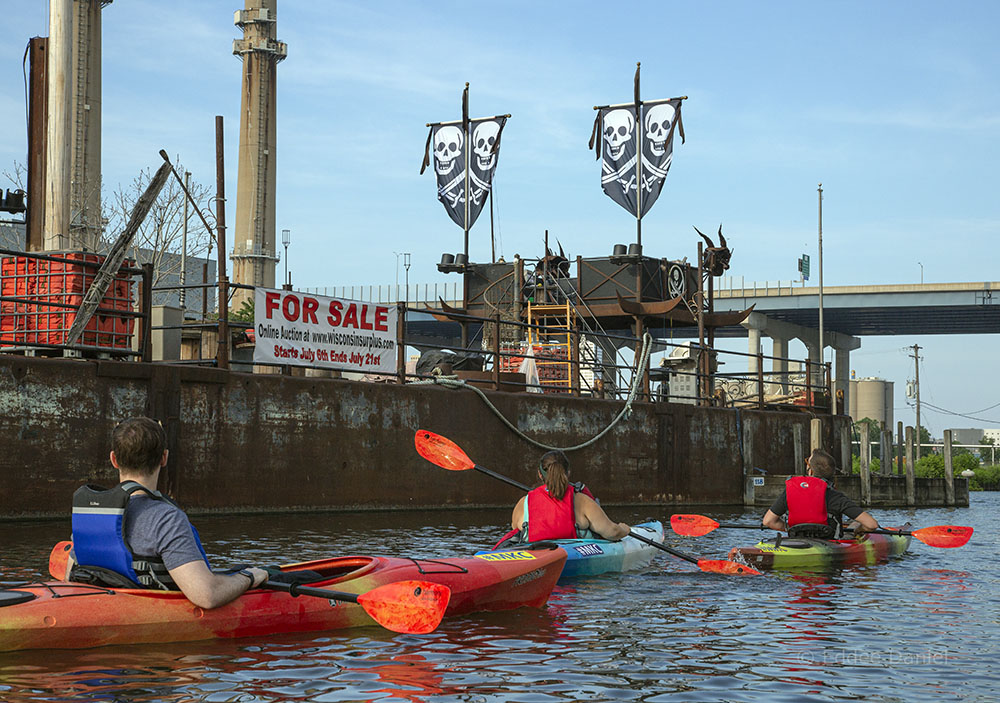
The Pirate Barge could once be seen out in the harbor as a party barge but was shut down by the Coast Guard due to missing licenses and permits. It is currently up for auction!
Along the Menomonee Canal, across from the WE Energies Power Plant, are former grain storage silos. They were recently purchased by Jerry Guyer, who will move his marina and dock repair business to the site!
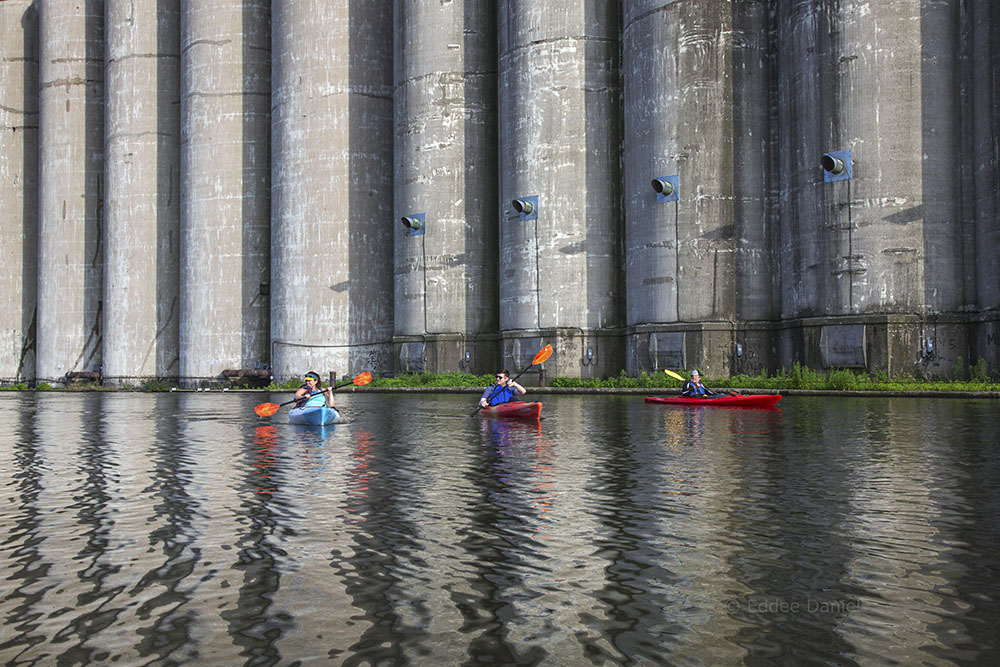
Along the Burnham Canal, many tanneries produced goods for decades while another building just south of the Canal produced iconic cream city bricks. The Burnham Canal will soon begin the process of being returned to its original wetland state—the project will permanently cap contaminated sediment from foundries and other former industrial uses. It will also provide a habitat for birds, fish, and other animals.

The Valley looks very different than it did 21 years ago. More than 50 companies have moved to or opened in the Valley creating more than 5,200 family-supporting jobs. The Hank Aaron State Trail now links the entire Valley and travels 14 miles, from Lakeshore State Park and Discovery World to Miller Park, west through State Fair Park to the county line. And, more than 45 acres of native plants can now be found along the Hank Aaron State Trail.
The Valley is a great place to work and a great place to visit to enjoy nature, premier entertainment destinations, and more!
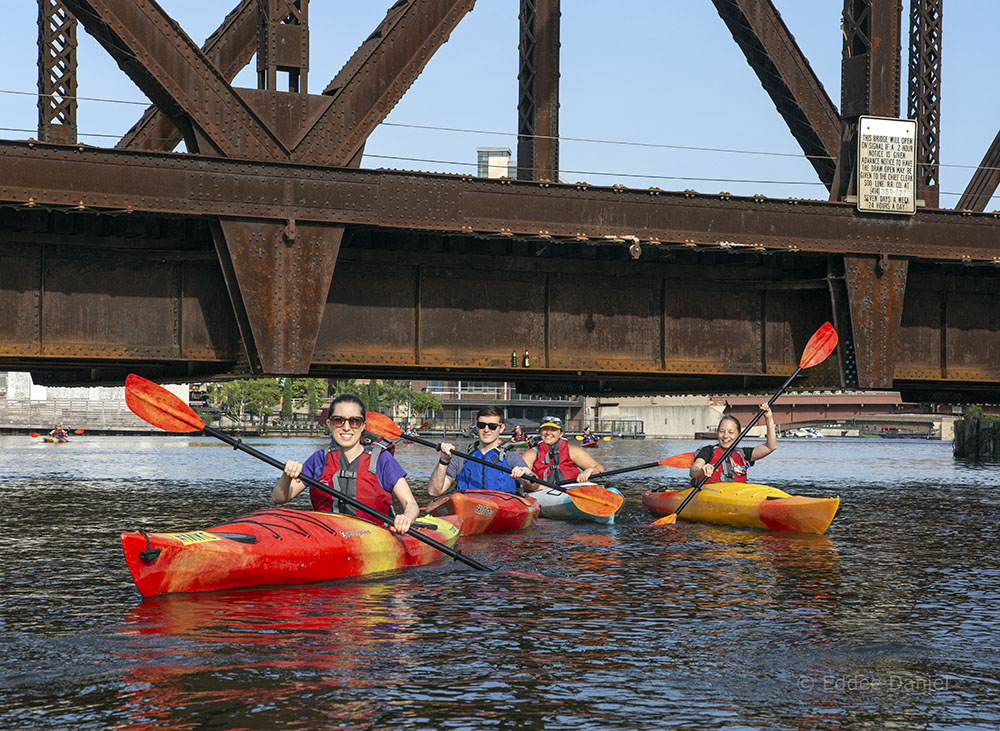
Note: This article was edited for space. To hear the entire spiel, watch the Menomonee Valley Partners website for the next tour!
Ben Hoekstra is Communications Manager for Menomonee Valley Partners (MVP). The kayak tour was made possible by Milwaukee Kayak Company. Eddee Daniel is on the boards of Preserve Our Parks and Friends of the Hank Aaron State Trail and served as Artist in Residence for MVP in 2014. You can see much more of his Menomonee Valley photography on his Artist in Residence website.

